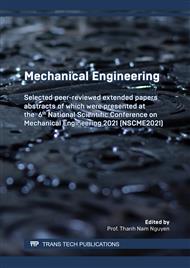p.45
p.55
p.69
p.79
p.89
p.101
p.115
p.131
p.145
Capacity Planning Considering Uncertainty Factors
Abstract:
Capacity planning is the process of determining the production capacity needed by an organization to meet changing demands for its products. Production capacity planning is generally based on all capabilities determining that wireless production is stable, with no fluctuations in machine downtime, variable processing times, defective products, etc., and use the mean for cycle time. However, actual production not only has many fluctuations in human resources that affecting the production time on each stage, but also affected by defective products leading to inaccurate planning. Therefore, planning production capacity under uncertain conditions is essential for any manufacturing enterprise. This paper proposes a model of capacity planning in uncertain conditions using real-time observation and then distributing observation time from which to analyze production capacity. Uncertainty factor as labor and defective products will be considered in this model.
Info:
Periodical:
Pages:
145-154
Citation:
Online since:
June 2022
Authors:
Keywords:
Price:
Сopyright:
© 2022 Trans Tech Publications Ltd. All Rights Reserved
Share:
Citation:



